
foversta
[PuristSPro Moderator]
20814

The Opus 2, the precious one
Let's start by correcting a mistake in the thread title: I will not speak about THE Opus 2 but about AN Opus 2... It is a similarity shared in common by the first two Opus: they were released in different versions.
Opus 2 versions are:
* The Tourbillon with Perpetual Calendar (11 pieces)
* The Tourbillon with 110 hours power-reserve (11 pieces)
* The Tourbillon with diamonds (piece unique)
As you can see it, one complication is highlighted with the Opus 2: the Tourbillon. It is not a surprise when we know the watchmaker involved in these watches: Antoine Prezuiso.
The impressive front side of the Opus 2: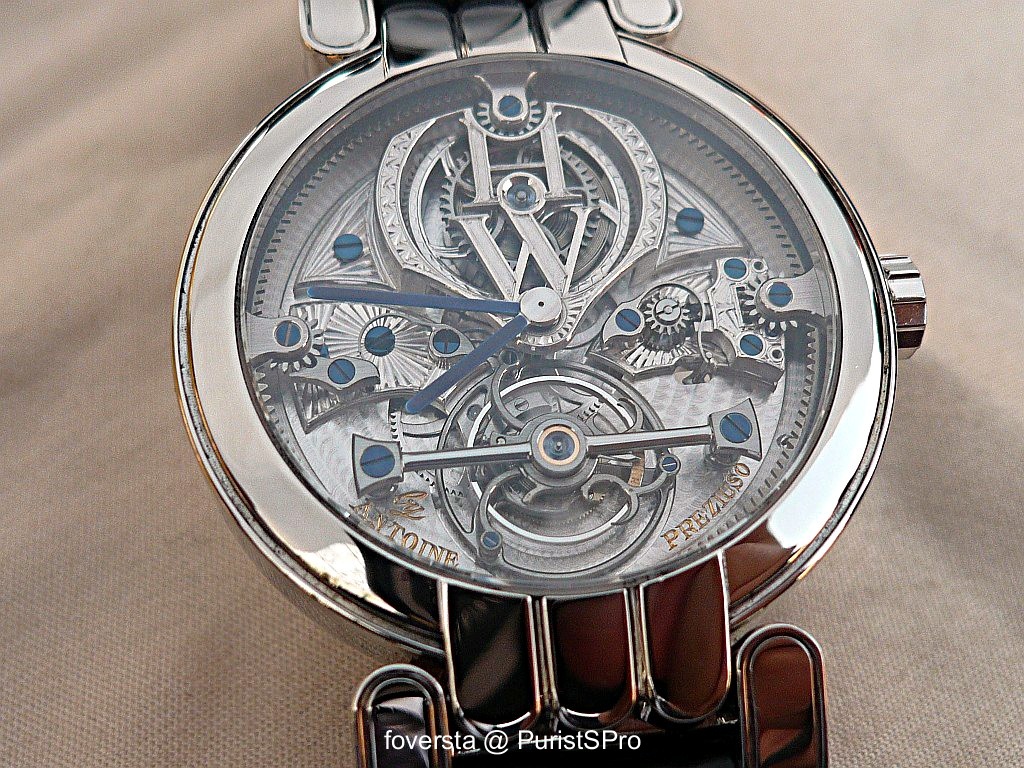
I would like to focus on the Tourbillon with 110 hours power-reserve. This Opus 2 is far from being the most famous Opus but I consider it as the closest to the original Harry Winston spirit. Why?
Because when I looked at this watch, when I handled it, when I wore it, I had the feeling to have in my hands a multifaceted diamond: this Opus 2 is a luminous and bright watch with a very delicate style.
When we have a close look at it, even if we are not an Opus specialist, we can guess that it belongs to the beginning of the collection, before the Opus V. I consider the Opus V as the pivotal Opus: after the Opus V, the collection would be composed by larger watches with a strong focus on innovative time displays. That was not the case before if we put aside the strangest UFO on Earth, the Opus 3.
The Opus 2 uses a 38mm platinum case (similar to the Opus 1) in each version and has a classic time display. This size looks like coming from another century when compared with the current Opus. The Perpetual Calendar one has a specificity though: the calendar is hidden by the caseback and like like a hunter cased watch, you have to open the cuvette to discover the different displays. I like this "secret watch" concept!
Sunrays and stars on the dial, the watch attracts the light: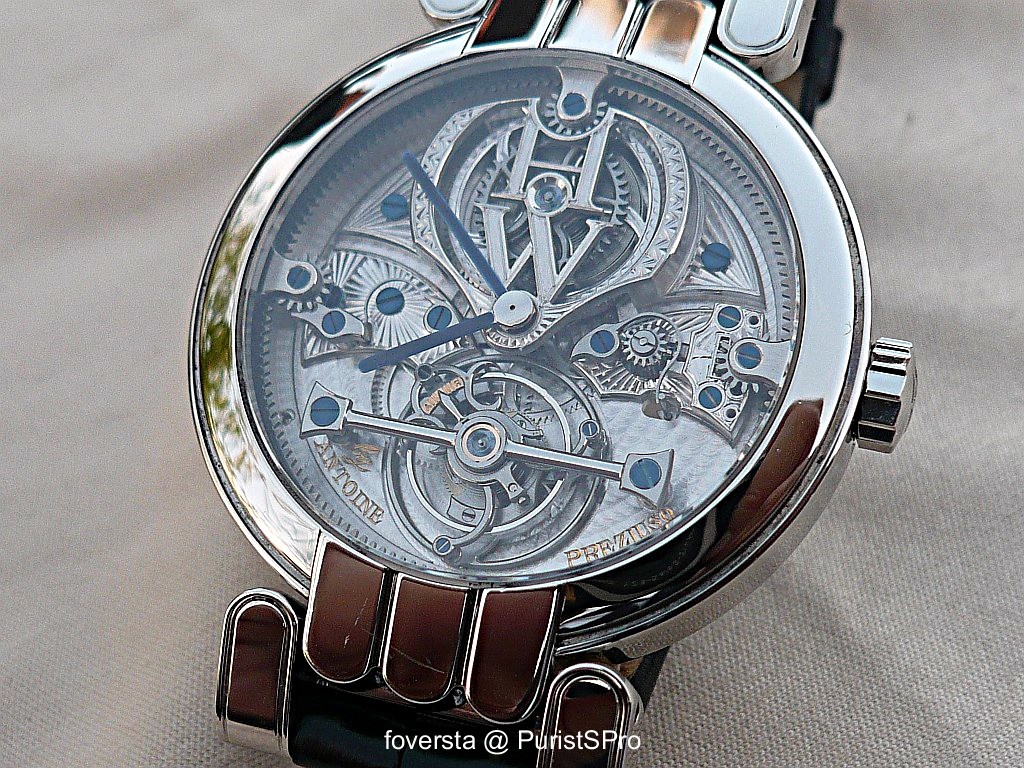
Despite its "small size", the Opus 2 is a very complex watch. Antoine Preziuso did a great job, transforming the Christophe Claret movement (the CLA97 if I'm not wrong) into the highpoint of the show. There isn't any dial, the movement has actually different purposes: it is the stage and the show at the same time. Its decoration replaces the dial, it also draws the Harry Winston logo front side! I would not call this movement a "skeletonized movement". Its original lay-out was created to have this appearance.
Everything conjures up a feeling of lightness: the hands seem to float above a 3D scenery with angled and polished bridges. The finishings of each part are really superb, even the barrel, beneath the Harry Winston bridge seems to be perfectly integrated into this delicate atmosphere.You may argue that there are too many blued screws front side. Believe me, they are like Tabasco in a salad dressing: they bring a spicy touch and a welcome contrast. Without them, the colours range would have been too tight: their purpose is also to better appreciate the feeling of depth and the care of details. You will notice that the two jewels on the barrel and the Tourbillon bridges are blue to be in harmony with the screws and the hands.
The feeling of depth and the large Tourbillon bridge: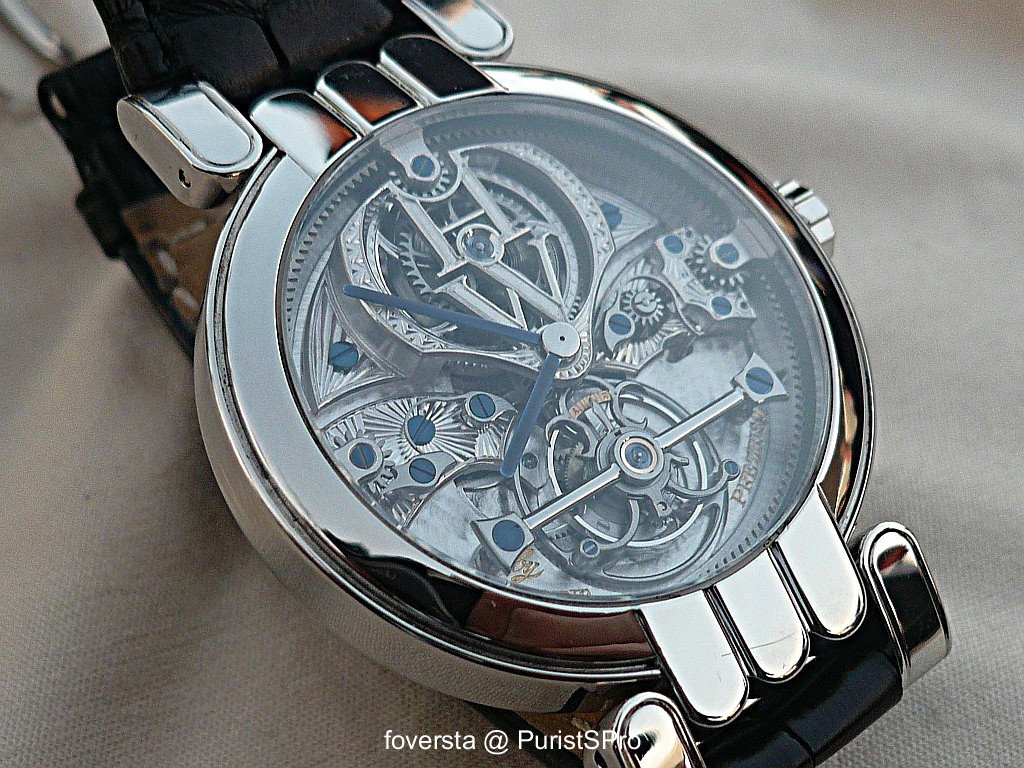
The engraving work is stunning: it is an explosion of sunrays, stars, waves. This engraving style is, like the case, inspired the main entrance of the NY Boutique. If I think that this Opus is the most glamourous one, the engraved parts contribute a lot to this feeling. The bottom plate features a bouchonné technique in order to give a quieter base to the movement.
There is a very impressive part on this side of the watch: it is obviously the Tourbillon bridge. It is a true suspension bridge if I may say so: its size and the polished rod make it very enjoyable for the view. The performances of the Tourbillon by itself are classic, making a full revolution every minute.
The Opus 2 and the Opus V:
Even if the behaviour of the Tourbillon is eye-catching, the movement has a lot of interesting charasteristics which deserve to be underlined.
* First one is the large power reserve: 110 hours. It is a strong performance with a single and not so large barrel and a more energy consuming complication. The balance was lightened as far as possible and has only two arms.
* Second one is the Remontage Mysterieux: I would say that we recognize the Claret touch here. The movement doesn't have a true crown wheel making more space available.
* Third one is the use of a wolftooth gearing which is very rare in the contemporary production.
Harry Winston doesn't have an exclusive use of this Claret movement, it can also be found in some timepieces like the DeWitt Academia Tourbillon Mysterieux and Corum Tourbillon "La Mysterieuse". Again, what is "mysterious" is the winding system. Same movement was used by the McGonigle brothers for their Tourbillon but they took another road with it. They didn't really take advantage of the mysterious side of the movement by hiding the main part of the lay-out front side. In fact, they concentrated their work on the Tourbillon, its cage and its bridge if we consider the visible parts.
Antoine Preziuso with the Opus 2 prototype on his wrist. This picture is like a symbol, just behind Atoine Preziuso, we can see Vianney Halter who was the watchmaker involved in the next Opus:
Due to the movement architecture, the front side of the Opus 2 is much more detailed and impressive than the backside. It is not a reason enough to forget to speak about it. It also has flawless finishings with a nice contrast between the gears and the large plate decorated with Cotes de Geneve.
The caseback of this Opus 2 prototype. You will recognize the typical gears of the Claret movement: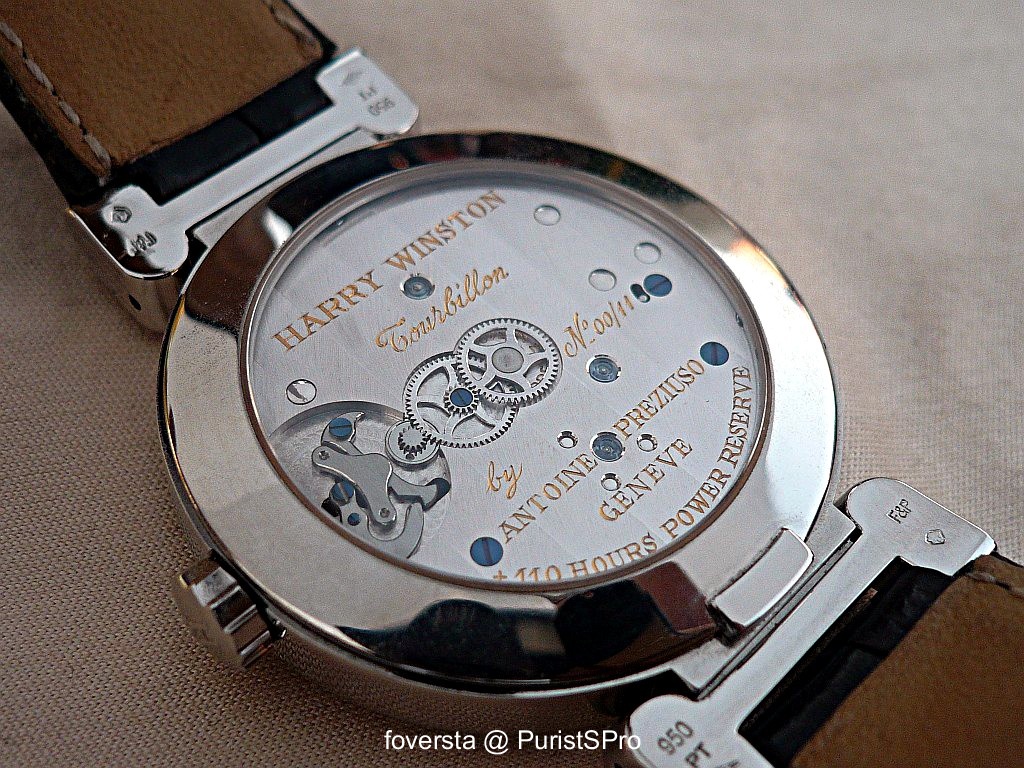

The case sounds familiar to us now and Antoine Preziuso didn't hide, when he presented the Opus 2, that he was inspired by the entrance of the Harry Winston Boutique in NY. It is a "Premier" case with the arch-shaped elements at the top and at the bottom of the case. The lugs were hand-soldered to the case and make the case larger than it is actually. The polished parts give a "shining" side to the case which works well with the decoration of the movement. As I said at the beginning, the Opus 2 is a luminous and bright watch, the combo created by the case and the movement finishings explains this impression. Interesting point: the Opus 2 case is the first example at Harry Winston of the use of a screwed-down caseback.
An unusual beauty on the wrist:
On the wrist, the Opus 2 is a very surprising watch. First of all, it is one of the most "precious" watches I've ever worn. Precious due to the polished parts of the case and its design, precious due to the decoration style of the movement and its depth, precious due to the feeling of lightness and of delicacy. Secondly, it looks bigger and despite its 38mm case, it has a strong presence on the wrist. And lastly, I found it more suitable for men's wrist than I thought at first glance.
You can spend hours watching the details: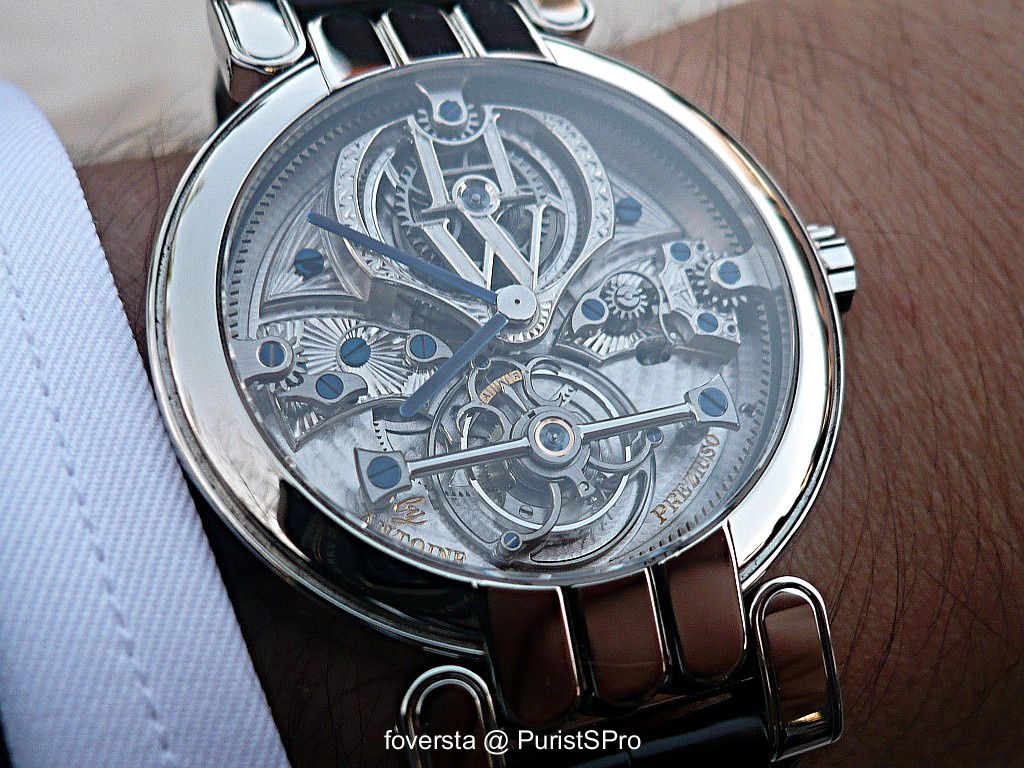
The Opus 2 is not the most innovative and technically impressive Opus. But I really like it because, for me, it is like having a piece of the 5th Avenue on the wrist... it is a true homage to the glamourous side of Harry Winston, it is a small mechanical diamond. Antoine Preziuso with his ability to combine artistic approach with prestigious complications was the perfect watchmaker for this objective.
Antoine Preziuso explains what inspired him for the Opus 2 creation:
You can't find a more opposite watch of the Opus Eleven for example. This is after all the main interest of the Opus collection: to explore new and varied horological territories. Last words go to Christophe Claret who got his first involvement with Harry Winston through the Opus 2, even if it is an "indirect" one. Then, Christophe Claret would have his own Opus project (the Opus 4) and would also work on the Tourbillon Glissiere.
I would like to thank a lot the Harry Winston team and Antoine Preziuso for the time he spent with me during the Opus 10th Anniversary event at the Harry Winston Manufacture.
Fr.Xavier
This message has been edited by foversta on 2011-09-11 02:29:33

The Opus 2, the precious one

A technically boring, but visually attractive watch

Thanks SJX.

Spiritus Primus is far from boring.

Thanks a lot Melvin for your post.
